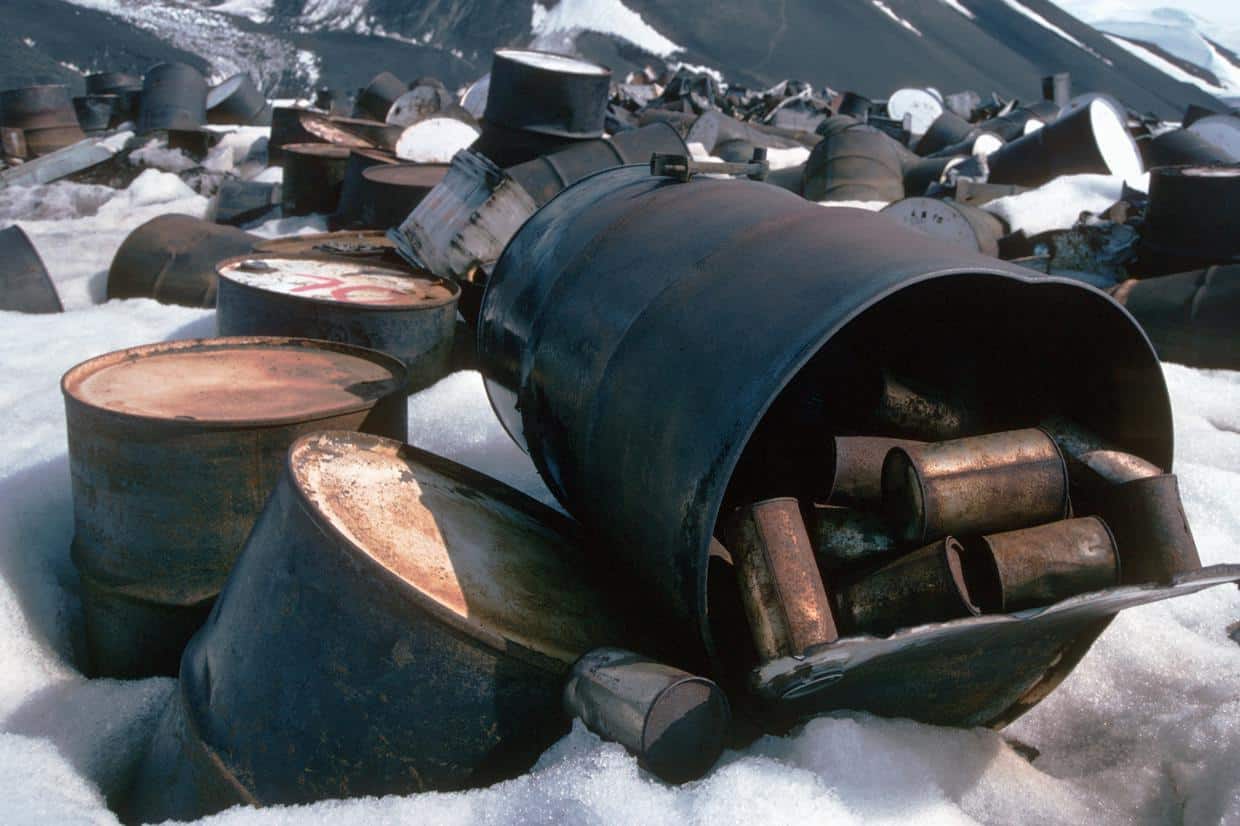
Under pressure: Land
Some of the rubbish left in Antarctica has been there for over a century, left behind by explorers who abandoned equipment. Back then, a common way of getting rid of waste was called, “sea-icing”, pushing it out onto the sea-ice where it was left to drift away.
Abandoned facilities also pose a special type of waste problem. Over time, the waste freezes and becomes embedded in the ice. Other waste heaps contain old batteries and rusting fuel drums that are gradually disintegrating and leaking poisonous chemicals into the ice and soil.
The ongoing operation of stations also impacts on the environment, with ice-free land changed by buildings, roads and airstrips. This can result in vehicles, aircraft and generators creating air and noise pollution that could stress wildlife and disrupt their breeding.
In 1991, it was agreed that explorers and scientists should take their rubbish away with them when they leave Antarctica, and today, no research stations dump waste out in the open. Some recycle their rubbish – the US Station at McMurdo has a recycling rate of over 90%, one of the highest rates for any settlement in the world!
Major clean-up projects for old sites are being undertaken by Australia at Thala Valley dump site and Wilkes Station. New Zealand and the United States are doing the same at their former station site at Cape Hallett. The UK is systematically removing its abandoned bases from the Antarctic Peninsula.








